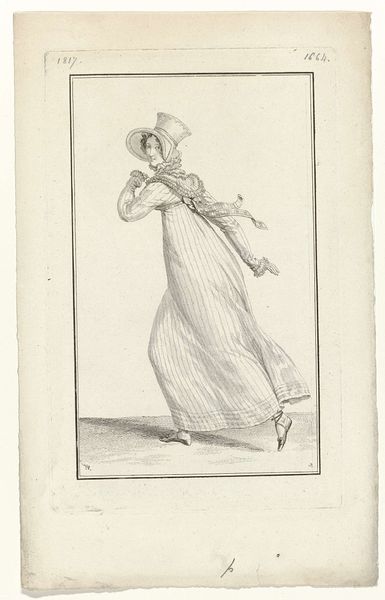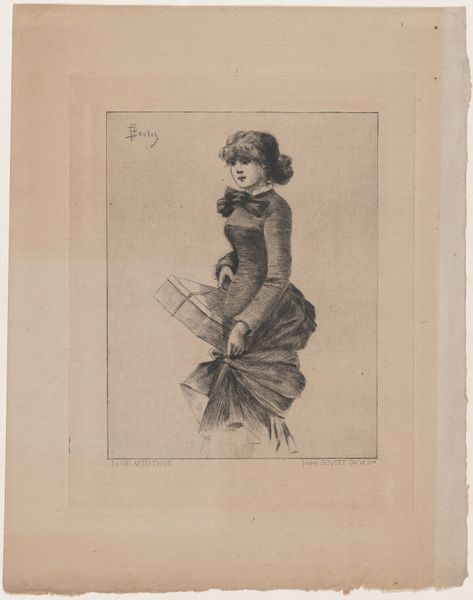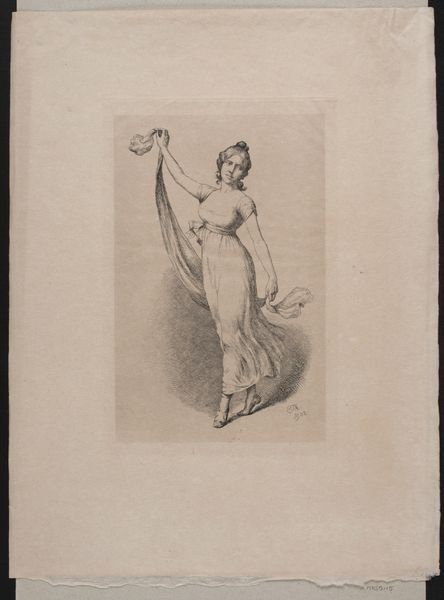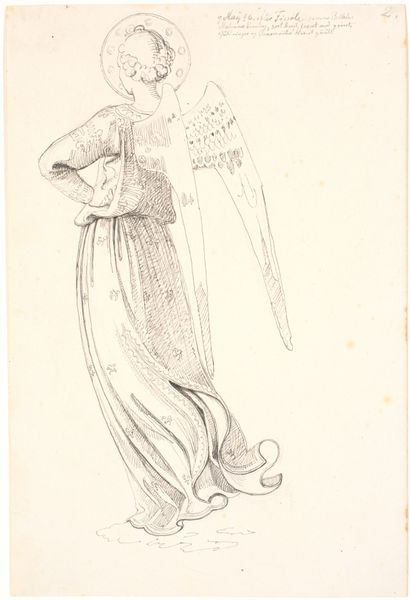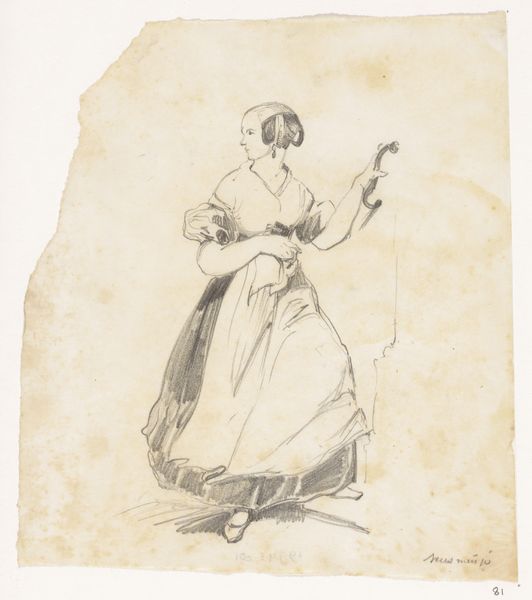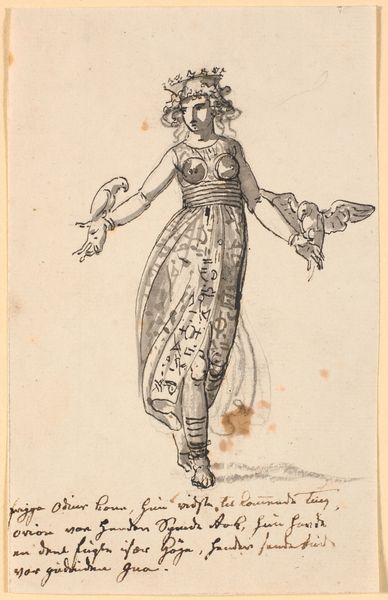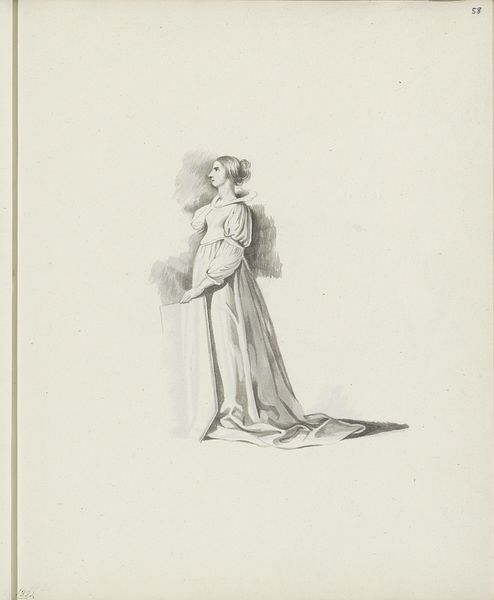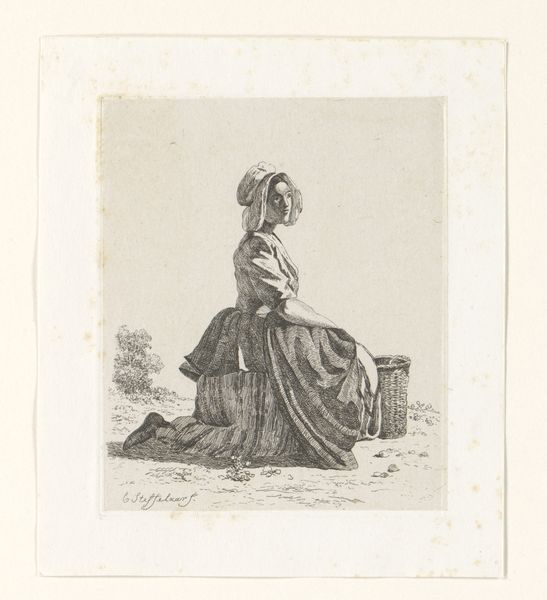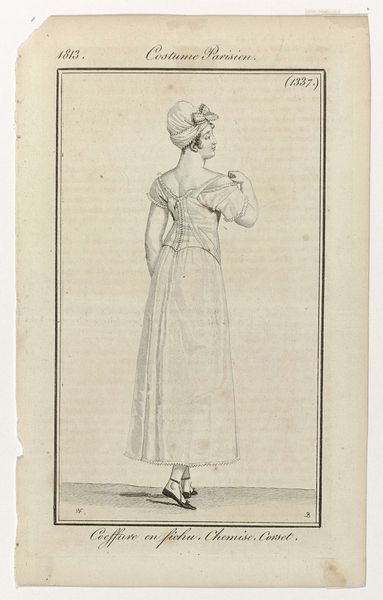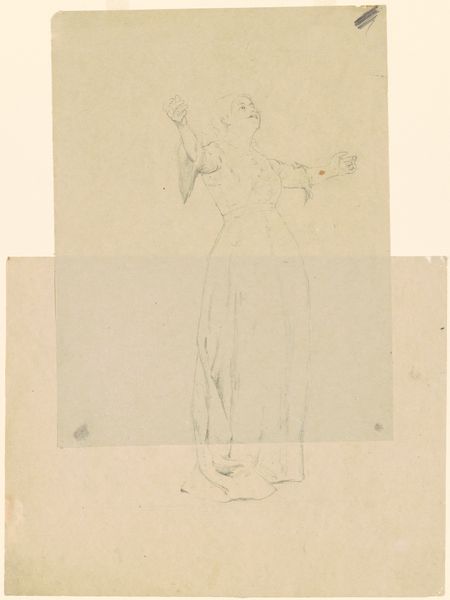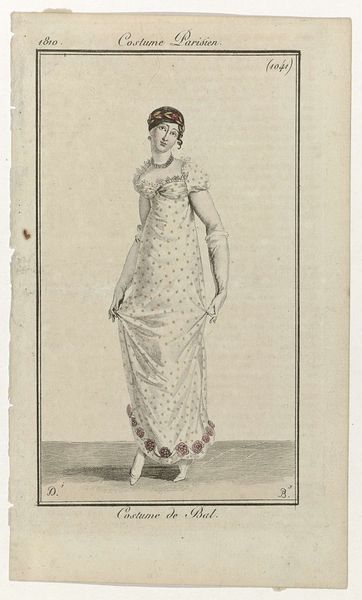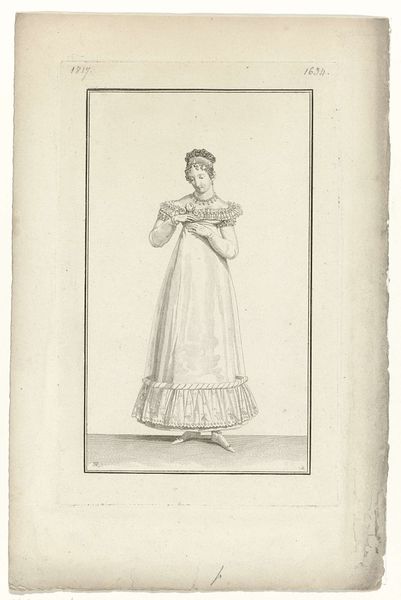
Journal des Dames et des Modes, Costume Parisien, 25 septembre 1813 (1342) 1813
0:00
0:00
drawing, print, paper, engraving
#
portrait
#
drawing
#
light pencil work
# print
#
figuration
#
paper
#
romanticism
#
line
#
genre-painting
#
dress
#
engraving
Dimensions: height 177 mm, width 113 mm
Copyright: Rijks Museum: Open Domain
Curator: This print, entitled “Journal des Dames et des Modes, Costume Parisien, 25 septembre 1813," created by Pierre Charles Baquoy in 1813, offers a glimpse into early 19th-century Parisian fashion. It's currently held in the collection of the Rijksmuseum. Editor: My immediate thought is that she looks rather… fragile. There's a lightness to the engraving, but also a delicate vulnerability about her posture and the flowing lines of her dress. It’s the kind of fragility we project onto an entire gender. Curator: I think you’ve hit on a key aspect of this work. Beyond the fashion plate aspect, there is the broader question of how women were portrayed and perceived in this era. The very existence of "Journal des Dames et des Modes" reveals the growing power and visibility of women in society. What role did publications play in constructing identities? Editor: The parasol she carries certainly speaks to protection, perhaps a need to maintain a delicate pallor considered fashionable, a rejection of labor in alignment with her station, but also about the symbols associated with class in a turbulent social and political landscape. Curator: Exactly! The visual language of dress and accoutrements serves as a clear marker of social status. Think of the enormous hats adorned with flowers – they convey status. The empire silhouette of the dress and even the gesture of the hand subtly underscores these distinctions. What do such details suggest about the prevailing social and cultural expectations for women during this time? Editor: I see a certain coyness too, perhaps representative of prescribed behavioral ideals, in the turned head and gently pointed foot. Yet there’s also the defiance and a degree of knowing inherent in her fashionable, self-assured presentation, it hints at an engagement with new cultural and political ideas circulating during this moment in time. Curator: Her presentation reflects, I think, a carefully constructed facade within limited yet increasingly contested boundaries. Examining artworks like these allow us to deconstruct the very ideas about identity, gender, and class that society attempts to impose. Editor: And for me, it is fascinating to decode these enduring visual symbols and what they tell us about both historical continuities and disruptions, still felt today. Curator: Yes, seeing these connections illuminates art's continued power as a tool for critical dialogue.
Comments
No comments
Be the first to comment and join the conversation on the ultimate creative platform.


